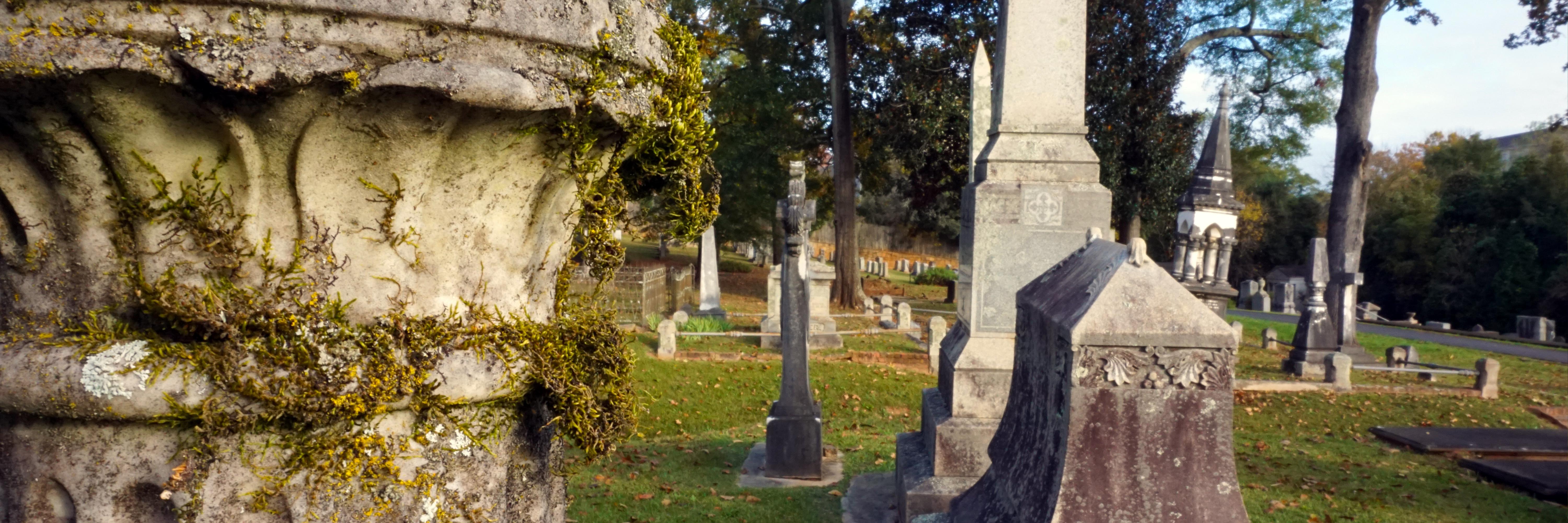Essays
Undergraduate students at the University of Georgia have contributed substantially to this project in myriad ways. In Fall 2019, students in Dr. Stephen Berry's HIST 4090: Death and Dying in America used death certificates as a lens into historic Athens; their research reveals the lasting effects of inequality and clearly indicates the influence of race, gender, and class on life expectancy. More recently, from 2019-2021, the members of Franklin Residential College participated in service-learning days at Gospel Pilgrim Cemetery in East Athens. Equipped with rakes, loppers, and wheelbarrows, students removed brush and cleared pathways, revealing gravestones in preparation for a February 2021 walking tour of the cemetery. In September 2020, Franklin Residential College students researched decedents and created short biographies of the men, women, and children interred in Gospel Pilgrim Cemetery. This section of the website features student work and makes it accessible to our university and community partners, whose cooperation has been essential to the success of this experiential learning project.
Essays
Research and Reflections from Franklin Residential College: A selection of historical biographies, which were researched and written by members of UGA's Franklin Residential College. Focusing on racial inequality, these biographies examine the lives and deaths of the Black men, women, and children interred in Gospel Pilgrim Cemetery. By FRC students. Fall 2020.
Death Visualizations: A visual analysis of death in Athens during the 1920s. Data derived from death certificates is distilled into categories and analyzed according to the race, class, and gender of the deceased individual. By Dalton Sherrod, Jalen Granski, Braden Pressman, Shai Shalev, Connor Herbert, Jacob Euster, Aliann Xu, and Eli Klenberg. Fall 2019.
Sam McQueen: A biography of Samuel McQueen: an upwardly mobile and economically prosperous African-American barber. By Madison Britt, Sally Smith, and John Flowers. Fall 2019.
Influenza in Athens: The influenza outbreak in 1918 infected around 500 million people, and killed between 50 - 100 million. Unlike the seasonal flu, this virus killed healthy men and women, often in their twenties and thirties. This essay surveys the flu’s deadly impacts on the United States, specifically in Athens, Georgia. By Ellie Cash, Alexa Cashen, Eli Hickey, and Daniel Prócel. Fall 2019.
Death in Athens, 1919-1928: Exploring the many causes of death in Athens, this essay considers ten CODs – heart failure, pneumonia and influenza, tuberculosis, stillborn, stomach failure, cancer, nephritis, apoplexy, paralysis, premature birth – and examines who died from what cause. By Stepahnie Lopez, Savannah Lang, and Leslie Wyatt. Fall 2019.
Maternal and Infant Mortality in Athens: From 1919 to 1923, 42 women died during childbirth as well as 336 newborns. This essay tells their story—how they died and how the community responded to their deaths. By Gabriel Wilson, Maggie Cavalenes, Emma Hale, and Peter Udall. Fall 2019.
Space and Social Justice in Athens: A visual analysis of income levels and the spatial distribution of wealth in the Athens from 1919 to 1928. The correlation between race and income are explored at length. By Griffin Hamstead, Mason Cantrell, Sailor Nicholas, Lacey Ewers, and Lindsay Brink. Fall 2019.
NEXT: Cemeteries


